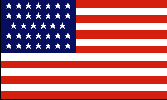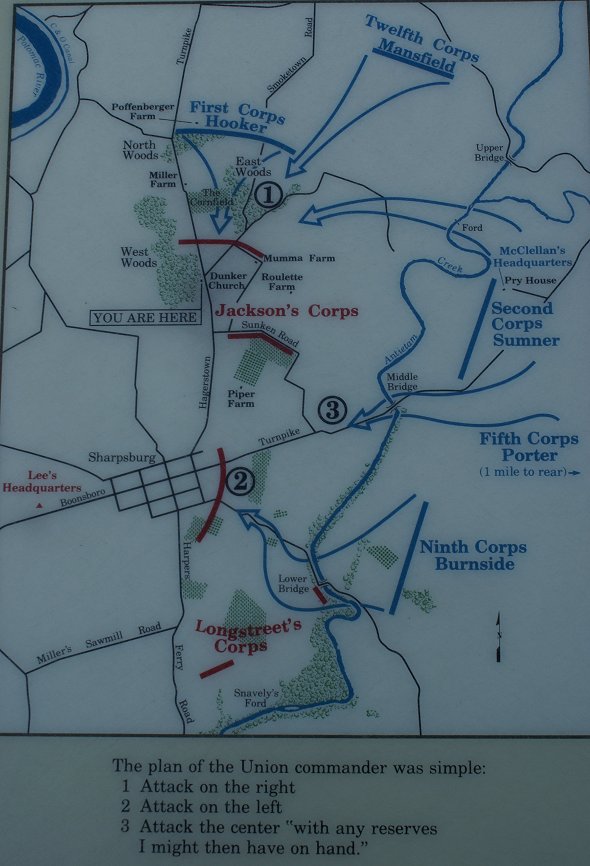On June 1, 1862, Robert E. Lee took over command of
Confederate forces near Richmond, and despite their location, he renamed them the Army of Northern Virginia.
After the Seven Days Campaign, McClellan
evacuated the Union army from the Peninsula. Lee moved north and nearly destroyed a Union
army under John Pope at the Second Battle of Manassas. Maintaining
the initiative, Lee now
moved into Maryland, hoping to recruit Confederate supporters and relieve
Virginia from its Union occupiers. Longstreet's corps marched to the
vicinity of Hagerstown,
occupying the South Mountain passes in order to cover Jackson's operation
to take Harpers Ferry. Orders revealing the Confederate plan were captured by McClellan, but the
cautious McClellan did not move fast enough to destroy Lee. On September
14th, McClellan forced the passes of South Mountain, but it was too late
to save Harper's Ferry which surrendered on the 15th along with over
11,000 men and 75 pieces of artillery.
On the same day, Lee along with Longstreet's corps stopped
retreating at the town of Sharpsburg behind Antietam Creek. Lee had pledged that he
would support Maryland rebels, and he felt obliged to fight. With no room
left for maneuver and
little else to gain, Lee nevertheless decided to fight at Sharpsburg. With a major
river to his rear, a retreat could easily become a disaster. He had only 26,000
men and reinforcements from Harper's Ferry would raise this to only
40,000 men. McClellan's Army of the Potomac mustered 75,000 men.
McClellan planned to attack, although the exact nature of his
plan was is open to debate. By appearances, though, the plan was as
follows. Starting on the right his corps would attack, one after another,
beginning with Hooker's I Corps and ending with Burnside's IX Corps on the
left. This Napoleonic style plan would force Lee to commit his reserves,
leaving the Confederates vulnerable to an attack in the center by the Union
reserve. A less subtle attack by the entire Union army simultaneously would
likely have overwhelmed the southerners as entire Confederate divisions had not yet
to arrived.




